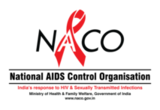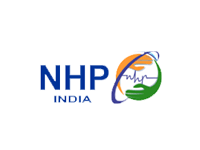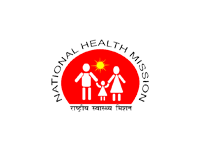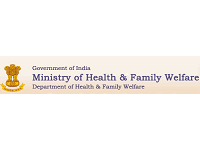Targeted Intervention for High Risk Group
India’s HIV program has been recognized globally as a very successful public health model with specific interventions for key population of Female Sex Workers (FSW), Men who have Sex with Men (MSM), Transgender (TG)/Hijra and Injecting Drug Users (IDUs) known as the Core Group and Migrants and Truckers known as the Bridge Population. Over 3 decades of implementing Targeted Interventions through NGO/CBOs, critical insights into the operational aspects is gained. Consolidating the success gained, a focused HIV intervention has been developed to reduce HIV prevalence among the key population.
The TI program has evolved over 4 Phases of the National AIDS Control Program (NACP) and this has been achieved through national, regional and state level consultations with multiple stake holders including community members and civil society organizations.
Targeted Intervention (TI) Approach
The prevention of HIV infection among the high risk group (HRGs) is the main thrust area for the NACP and the TI program has demonstrated that it is the most effective way of controlling the epidemic among this population. The approach for providing services to this population began by conducting various mapping exercises that helped in arriving at a specific denominator for service provision. The latest mapping was conducted for TGs/Hijra in 2013. One of the primary aims of NACO and the State AIDS Control Society (SACS) is to ensure saturation of this figure through TI service components of Behaviour Change Communication, Condom Distribution for Core Group, Condom Social Marketing for Bridge Population, Outreach Services, Counseling, HIV testing, Linkages/Referrals, STI management, Needle/Syringe Program (for IDUs), Opioid Substitution Therapy (for IDUs), enabling environment for all key population and advocacy to reduce stigma and discrimination.
In order to measure the program efficiency a system of HIV Sentinel Surveillance was introduced and over the years India’s efficient response to HIV has resulted in reduction of HIV prevalence among most of the core group with the exception of IDUs and TGs/Hijra. The HIV prevalence among ANC is 0.29% and Female Sex Worker 2.20%, Men who have Sex with Men 4.30%, Injecting Drug Users 9.90%, and Transgender/Hijra population 7.20% (IBBS 2015). The bridge population consisting of Truckers and Migrants had HIV prevalence of 2.59% and 0.99% respectively. (HSS 2012-13 Technical Brief)
Female Sex Workers (FSWs)
The HIV epidemic in India is known to be a concentrated epidemic with FSWs being one of the core risk groups that are affected. FSWs have many sexual partners concurrently. Generally, full time FSWs have at least one client per day. Some FSWs have more clients than others. In addition to the number of clients their nature of work also increases their vulnerability to HIV. The higher risk of FSWs is reflected in a substantially higher prevalence of HIV among them than in the general population.
As per the IBBS conducted in 2014-15, HIV prevalence among FSWs found to be 2.2%, which is eight times more than among pregnant women attending antenatal clinics (0.29%) as per HSS 2014-15. However there has been a steady decline in the HIV prevalence among this population as a result of effective interventions over the years.
Men having Sex with Men (MSM)
Men Having Sex with Men(MSM) are another important group who are highly vulnerable to HIV and are also a strategically important group for focusing HIV prevention programmes. The term ‘men who have sex with men’ (MSM) is used to denote all men who have sex with other men as a matter of preference or practice, regardless of their sexual identity or sexual orientation and irrespective of whether they also have sex with women or not.
It is important to know that not all MSM have many sexual partners however, there are MSM sub-populations which do have high rates of partner change as well as high number of concurrent sexual partners. These sub-groups of MSM who often engage in anal sex with multiple partners are at particularly high risk. As per the IBBS conducted in 2014-15, HIV prevalence among MSMs found to be 4.30%.
Transgender/Hijra
NACO has initiated exclusive TG/Hijra intervention under NACP IV based on the recommendation from the working groups and needs from communities. A separate costing and operational guideline has been developed for uniformity in scaling up of TG/Hijra intervention in the country based on the mapping.
In order to ensure standardization of program, feedback from stakeholders and communities, the typology wise Technical Resource Groups (TRG) formed and conducted, periodically.
TIs for Bridge Populations
Individuals who have sexual partners in the high risk groups as well as other partners of lower risk(General population) are called a “bridge population”, because they form a transmission bridge from the HRGs to the general population. Quite often they are clients or partners of male and female sex workers. Truckers and Migrant workers are named as bridge population through close proximity to high risk groups and are at the risk of contracting HIV.
They are a critical group because of their ‘mobility with HIV’. Their living and working conditions, sexually active age and separation from regular partners for extended periods of time predispose them to paid sex or sex with non-regular partners. Further, inadequate access to treatment for sexually transmitted infections aggravates the risk of contracting and transmitting the virus.
TIs to Reduce the Vulnerabilities of Bridge Population
The NACO interventions are aimed at controlling the spread of HIV and STI through increasing awareness about their transmission and prevention. All interventions are aimed at promoting safe sex through use of condoms. They also facilitate easy access to condoms, treatment for STIs, counselling, testing and treatment services.
How are Interventions reached to Truckers?
These interventions involve interaction with the target community about sexually transmitted infections, HIV/AIDS and safe sex. For better recall and understanding information, education and communication materials are used in such community interactions. Peer educational activities are also undertaken for effective outreach of the messages.
So far, all interventions were carried out by NGOs at locations where truck drivers halt for sufficient duration like along highway stretches, business activity areas, check posts or port areas. Under NACP-III, a larger gamut of organisations constituting National Highway Authority of India, social marketing organisations in the promotion of condoms, NGOs and truckers’ organisations at state and district level are involved in a concerted effort for better outreach of the interventions. The ultimate aim is to harness the trucking community, associations, brokers and others in driving these interventions.
Interventions aimed at Migrants
The interventions for migrants are focused on 8.64 million temporary, short duration migrants. They are of special significance to the epidemic because of their frequent movement between source and destination areas. Therefore, to provide continuum of services to these migrants and their spouses, interventions are proposed at destination, source and transit areas. As all migrants are not at equal risk of HIV, only the high risk migrants (both male & female) are covered at the destinations through Targeted Interventions run by NGOs. Industrial houses, factory owners, construction companies and other employers engaging these migrants are also being motivated to provide HIV prevention services to these migrants. For reaching to migrants, NGOs identify volunteers among the migrants community and train them in spreading preventive messages among their fellow workers.
Link Worker Scheme
Rural HIV infection was another challenge area that needed to be addressed. Owing to poor infrastructure, weak health care systems and poor connectivity with most facilities, large number of vulnerable population, HRGs, Bridge Population and PLHIVs needed to be provided services. In order to bridge this gap Link Worker Scheme (LWS) was initiated. For more details please click here for the operational guideline of LWS.
Harm Reduction Program
NACO has adopted the harm reduction policy as a strategy for prevention of HIV/AIDS amongst IDUs in 2002 during the second phase of the National AIDS Control Program (NACP II). Counselling, behavior change communication (BCC), Needle Syringe Exchange Program (NSEP), abscess prevention and management, STI treatment, referral and linkages, etc are the service components of the strategy. These services are being provided through the NGOs known as the IDU TI.
In the current NACP IV, the provision of female outreach worker (ORW) was added in all the IDU TIs for reaching out to the spouses of male IDUs. Female Injecting Drug User (FIDU) is also an additional typology being included in NACP IV. The key aspects of the strategy to provide services to FIDUs include:
- Comprehensive package of services including services specifically addressing needs of Female IDUs
- Female friendly service delivery mechanisms
- Gender responsive and need based services
- Community participation in programme planning and implementation
- Evidence driven response- Collection and application of strategic information for program design and improvement in quality implementation
Opioid Substitution Therapy (OST) was integrated as part of the harm reduction service component in 2008. Buprenorphine is the drug for the OST program. India has two models for delivering OST Services:
- NGO model: NACO has been supporting OST implementation in NGO settings since 2008. In this model, OST services are offered by NGOs already implementing an IDU TI project and offering the package of harm reduction services mentioned above. The medications are dispensed to the clients on a daily basis directly under supervision by a qualified and trained nurse (DOTS). The TI staffs are trained on OST management and are required to follow standard operating procedures drafted to ensure minimum standards of care which include maintenance of records for clinical interactions, dispensing and stock keeping.
- Collaborative Model:In 2010, NACO has piloted a collaborated model of OST delivery based on partnership between Government hospitals and NGOs implementing IDU TIs. In this model, the OST centre is located in a Government health care setting (medical college hospital, district hospital, sub-divisional hospital, CHC, etc.) and is tasked with clinical assessment, diagnosis, prescription of substitution treatment, follow-up, dispensing of the medications and stock management. Each of these OST centres is linked with nearby IDU TI(s) which facilitate the service uptake by motivating IDU clients in the project area and referring them to the centre for treatment. In addition, the linked IDU TIs also follow-up with clients who drop-out from treatment and conduct regular advocacy with local stakeholders to generate support for the OST programme.
The NGO OST centres are accredited by an external agency (National Accreditation Board of Hospitals and Healthcare Providers) once in 2 years. Only those centres which meet the minimum standards laid down by NACO and are certified by NABH are permitted to dispense medications.
OST distance learning programme for building the capacities of service providers engaged in delivery OST has also been developed. This distance learning program is targeted towards the personnel working in OST centres. The online training programme is a joint endeavour of National Drug Dependence Treatment Centre (NDDTC), All India Institute of Medical Sciences (AIIMS), New Delhi and Public Health Foundation of India (PHFI), New Delhi under the guidance of NACO.
OST with methadone syrup has been introduced for the first time in the current NACP IV. Regional Institute of Medical Science (RIMS), Imphal is the site identified for the program. NACO plans to scale up the sites gradually in other high burden IDU states. Training module for OST with methadone has been developed in collaboration with NDDTC, AIIMS.
Recognizing that partnerships with law enforcement agencies would be a value addition to the implementation of the harm reduction services, NACO held a National Consultative meeting with key stakeholders including State prison departments in 2014 under the chairmanship of Union Secretary, MOHFW. Based on the suggestions provided by the subject knowledge experts from the national consultative meeting a National strategy on HIV Prevention and Control in Prison Settings was developed. Additionally, a National Working Committee (NWC) on Prison HIV and Law Enforcement was also constituted to overlook the implementation of the program.
In order to standardise the approach to scaling up coverage among these core groups and bridge populations and maintain a high level of quality, it is important to provide detailed information on various operational issues to TI. Hence, NACO has developed detailed TIoperational guidelines and capacity building manuals for each typologies.

























